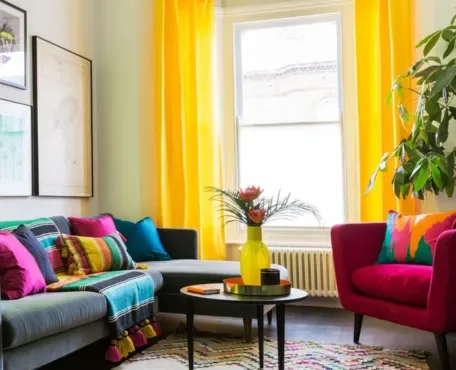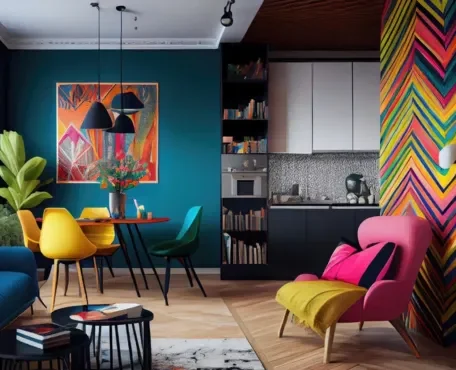
In recent years, sustainability has emerged as a crucial consideration across various industries, including the realm of design and construction. With growing concerns about environmental degradation and climate change, professionals are increasingly seeking ways to minimize their environmental footprint. In the field of color selection and application, adopting sustainable practices is not only a moral imperative but also a strategic necessity. This article explores the significance of incorporating sustainable and environmentally friendly practices in color selection and application, offering insights into various strategies and technologies that can promote eco-consciousness without compromising on design quality.

1.*The Environmental Impact :
Color selection and application play a significant role in the aesthetics and functionality of architectural spaces. However, the traditional methods of producing and applying colors often come with a considerable environmental cost. The production of conventional paints involves the extraction of raw materials, energy-intensive manufacturing processes, and the release of volatile organic compounds (VOCs) into the atmosphere. Additionally, the disposal of leftover paint and packaging further contributes to environmental pollution and waste generation.
Moreover, the choice of colors can influence the energy performance of buildings. Dark-colored surfaces absorb more heat, leading to increased cooling demands in warm climates, while light-colored surfaces reflect more sunlight, reducing the need for artificial cooling. Therefore, the selection of colors should not only consider aesthetic preferences but also energy efficiency and environmental impact.
The Environmental Impact of Color Selection and Application in Architecture:
1.* Environmental Cost of Traditional Paints:
Raw Material Extraction:
The production of conventional paints starts with the extraction of raw materials such as pigments, solvents, and binders. This process often involves mining and refining, which can lead to habitat destruction, resource depletion, and pollution.
Energy-Intensive Manufacturing:
The manufacturing of paints requires significant amounts of energy, contributing to greenhouse gas emissions. Factories that produce paint often rely on fossil fuels, exacerbating the carbon footprint.
Release of VOCs:
Traditional paints emit volatile organic compounds (VOCs) during application and drying. VOCs contribute to air pollution and can cause health problems such as respiratory issues and headaches. Long-term exposure to VOCs is linked to more severe health effects, including liver and kidney damage.
Waste Generation:
Leftover paint and packaging contribute to environmental pollution. Improper disposal of paint can lead to soil and water contamination. The packaging, often made of plastic or metal, adds to the growing problem of waste management.
2.* Influence on Energy Performance:
Heat Absorption &Cooling Demand:
Dark-colored surfaces absorb more heat from the sun. In warm climates, this can lead to higher indoor temperatures, increasing the reliance on air conditioning systems and thus elevating energy consumption and greenhouse gas emissions.
Sunlight Reflection &Cooling Reduction:
Light-colored surfaces reflect more sunlight, which helps to keep buildings cooler. This can reduce the need for artificial cooling, lowering energy usage and benefiting the environment.
Climate-Specific Considerations:
The optimal color selection for energy efficiency depends on the local climate. In hot climates, lighter colors are generally more energy-efficient, while in cooler climates, darker colors might help reduce heating costs by absorbing more solar heat.
3. *Sustainable Alternatives:
Low-VOC and VOC-Free Paints:
These paints are formulated to minimize the release of harmful chemicals, reducing indoor air pollution and associated health risks.
Natural &Recycled Paints:
Made from sustainable materials and using environmentally friendly processes, these paints can significantly lower the environmental impact.
Reflective Coatings:
Specialized coatings can reflect more solar radiation, enhancing the energy efficiency of buildings regardless of the color chosen.
4.* Color Selection for Energy Efficiency:
Integrated Design Approach:
Architects and designers should consider color as a key factor in the overall energy strategy of a building. By integrating color choices with other design elements such as insulation, shading, and ventilation, the energy performance of a building can be optimized.
Adaptive Solutions:
Incorporating technologies like smart windows and dynamic facades can help manage the thermal impacts of color choices, allowing buildings to adapt to changing environmental conditions.
While the aesthetic value of color in architecture is undeniable, its environmental implications are equally significant. Sustainable color choices and innovative applications can mitigate the negative environmental impacts, contributing to greener, more energy-efficient buildings. By considering both aesthetics and sustainability, architects and designers can play a crucial role in reducing the ecological footprint of the built environment.
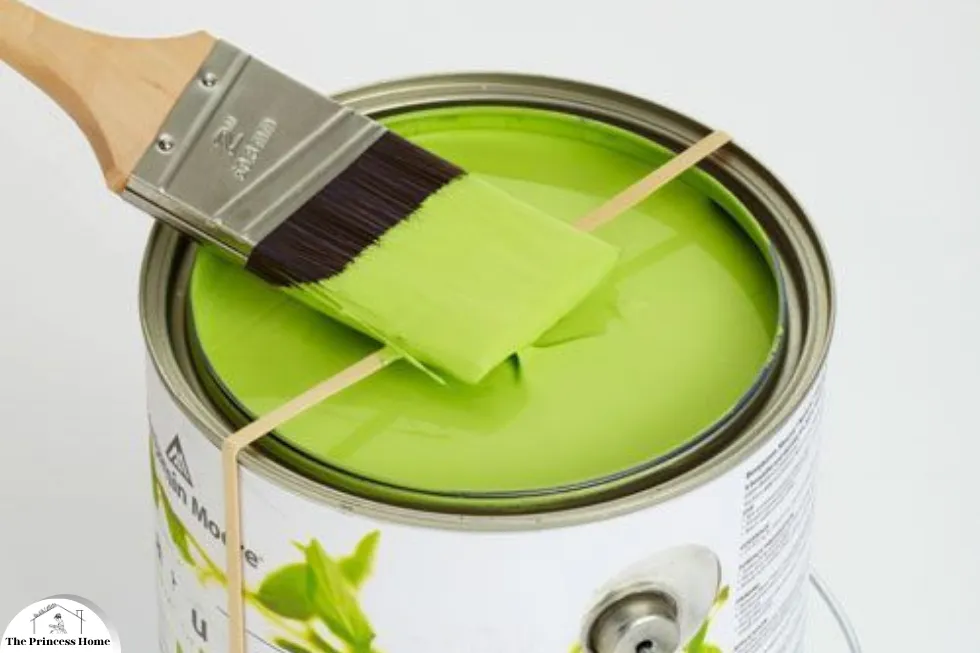
2.*Sustainable Practices :
Use of Low-VOC and Zero-VOC Paints: One of the most significant steps towards sustainable color selection is opting for paints with low or zero VOC content. VOCs are harmful chemicals that can contribute to indoor air pollution and have adverse effects on human health. By choosing paints that emit fewer VOCs, designers can create healthier indoor environments while reducing their carbon footprint.
1.Recycled & Biodegradable Pigments:
Another eco-friendly approach is to use paints made from recycled or biodegradable pigments. These pigments can be derived from natural sources such as plants, minerals, or even recycled materials like glass or plastic. By utilizing renewable resources and reducing reliance on virgin materials, designers can minimize the environmental impact of color production.
2.Sustainable Packaging:
In addition to the paint itself, attention should also be paid to the packaging materials used. Opting for packaging made from recycled or biodegradable materials can help reduce waste and minimize the environmental footprint of color products.
3.Energy-Efficient Colors:
When selecting colors for architectural surfaces, designers should consider their impact on energy consumption. Light-colored paints, for example, can help increase natural daylighting and reduce the need for artificial lighting, leading to energy savings and lower carbon emissions.

3.*Innovations in Sustainable Color Application:
1.Spray-On Paint Systems:
Traditional paint application methods, such as brush or roller application, often result in significant material waste and overspray. Spray-on paint systems offer a more efficient and precise alternative, allowing for better control of paint distribution and minimizing waste. Additionally, some spray-on systems utilize electrostatic or airless technology, further reducing VOC emissions and improving indoor air quality.
2.Digital Color Matching &Printing:
Advancements in digital technology have revolutionized the way colors are matched and applied in architectural design. Digital color matching systems allow designers to create custom color palettes with precision, minimizing the need for manual color mixing and reducing waste. Similarly, digital printing techniques enable the direct application of colors onto surfaces, eliminating the need for traditional paint cans and brushes.
3.Sustainable Application Techniques:
In addition to technological innovations, there is a growing emphasis on adopting sustainable application techniques in color projects. This includes practices such as proper surface preparation to ensure paint adhesion, efficient use of masking materials to minimize waste, and proper disposal of leftover paint and equipment. Training and certification programs for painters can help promote these sustainable practices and ensure their widespread adoption.
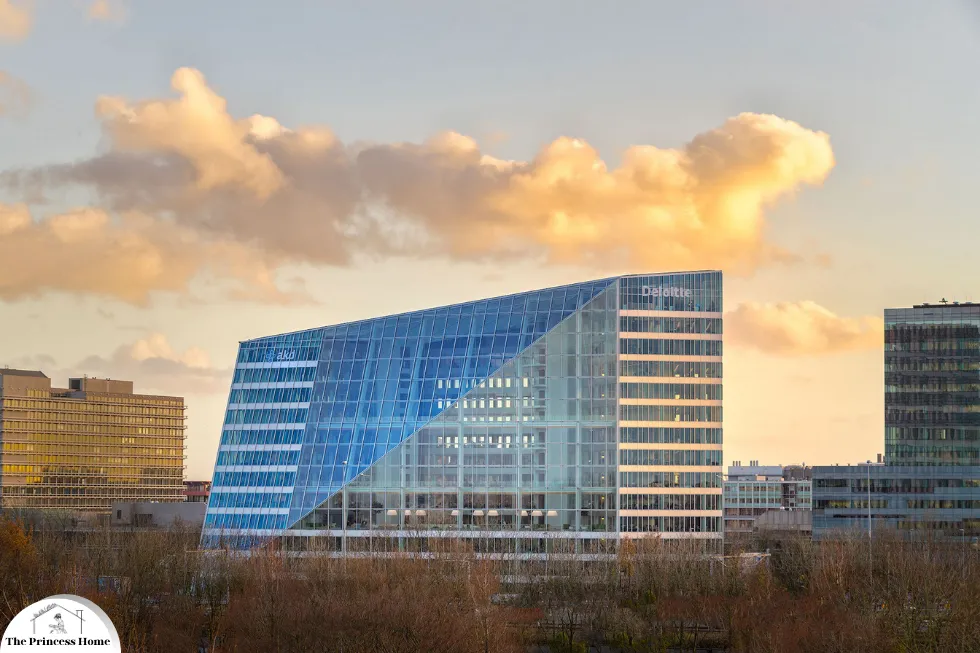
4.*Case Studies:
1.The Edge, Amsterdam:
Designed to be one of the greenest buildings in the world, The Edge incorporates sustainable principles in every aspect of its design, including color selection and application. The building features a high-performance facade with light-colored finishes to maximize natural daylighting and reduce energy consumption. Low-VOC paints and sustainable packaging materials were used throughout the construction process, contributing to the building’s LEED Platinum certification.
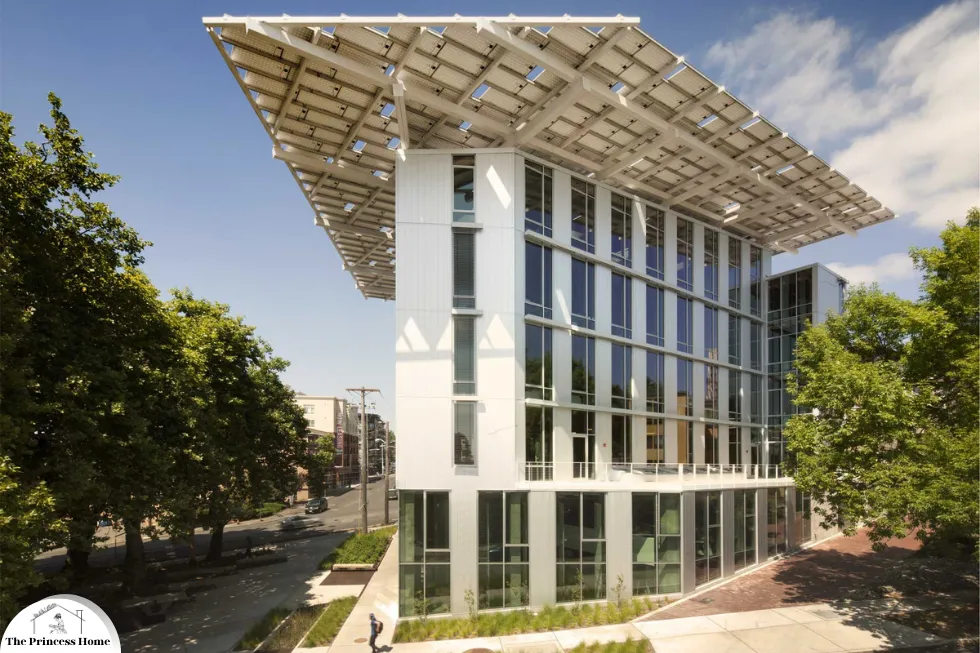
2.The Bullitt Center, Seattle:
As a model of sustainable design, The Bullitt Center showcases the potential of innovative color selection and application techniques. The building’s exterior features a combination of light-colored finishes and green roofs to minimize heat absorption and reduce urban heat island effect. Interior spaces are adorned with low-VOC paints and digital prints, creating vibrant and eco-friendly environments for occupants.
Conclusion:
Incorporating sustainable practices in color selection and application is essential for reducing the environmental impact of architectural design and construction. By choosing low-VOC paints, utilizing recycled pigments, and adopting energy-efficient colors, designers can create healthier and more environmentally friendly spaces. Furthermore, innovations in paint application technology offer opportunities to minimize waste and improve efficiency. Through collaboration and commitment to sustainability, the design industry can pave the way for a more sustainable and resilient built environment.
Frequently Asked Questions (FAQs)
1. What are VOCs, and why are they harmful?
Volatile Organic Compounds (VOCs) are chemicals found in many traditional paints and coatings. They easily evaporate into the air and can contribute to indoor air pollution, causing health issues like headaches, dizziness, and respiratory problems. Additionally, VOCs contribute to outdoor air pollution and the formation of smog.
2. How can I identify low-VOC or zero-VOC paints?
Look for paints labeled as “low-VOC” or “zero-VOC” on the packaging. Certifications from organizations such as Green Seal or GREENGUARD can also indicate that the paint meets specific environmental and health standards.
3. What are some natural sources of pigments used in sustainable paints?
Sustainable paints can use pigments derived from plants (such as roots, berries, and leaves), minerals (like clay and chalk), and even recycled materials (such as ground glass or repurposed plastics).
4. How do light-colored paints contribute to energy efficiency?
Light-colored paints reflect more sunlight than dark colors, which helps to keep buildings cooler by reducing the amount of heat absorbed. This can lower the need for air conditioning and reduce overall energy consumption.
5. What is the advantage of using spray-on paint systems?
Spray-on paint systems can offer more precise and even application, reducing material waste and overspray. Some advanced systems also reduce VOC emissions and improve air quality during the painting process.
6. How does digital color matching benefit sustainable design?
Digital color matching allows for precise creation of custom color palettes, minimizing the need for manual mixing and reducing paint waste. It ensures consistency and accuracy, which can lead to more efficient use of materials.
7. What are some sustainable packaging options for paints?
Sustainable packaging options include using containers made from recycled materials, biodegradable packaging, and minimizing the use of plastic. Some companies also offer refillable paint containers to reduce waste.
8. Can sustainable paints be as durable and high-quality as traditional paints?
Yes, many sustainable paints are designed to be as durable and high-quality as traditional paints. Advances in technology and formulation have allowed eco-friendly paints to perform well in terms of coverage, longevity, and finish.
9. What should be done with leftover paint to ensure it is disposed of sustainably?
Leftover paint should be properly sealed and stored for future use. If disposal is necessary, it should be taken to a recycling facility or a hazardous waste disposal site. Avoid pouring paint down the drain or throwing it in the trash.
10. Are there training programs for painters to learn sustainable practices?
Yes, there are training and certification programs available for painters to learn about sustainable practices. These programs often cover topics like proper surface preparation, efficient application techniques, and safe disposal methods.
11. How do sustainable color practices contribute to green building certifications like LEED?
Incorporating sustainable color practices can contribute to earning points in green building certification systems like LEED (Leadership in Energy and Environmental Design). Using low-VOC paints, energy-efficient colors, and sustainable materials supports the criteria for indoor environmental quality, energy efficiency, and materials sustainability.
12. What are some real-world examples of sustainable color application in architecture?
Examples include The Edge in Amsterdam, which uses light-colored finishes to enhance daylighting and reduce energy use, and The Bullitt Center in Seattle, which features low-VOC paints and sustainable digital prints to create eco-friendly spaces.
13. How can homeowners incorporate sustainable color practices in their own projects?
Homeowners can choose low-VOC or zero-VOC paints, consider recycled or natural pigments, opt for light-colored paints to enhance energy efficiency, and use digital color matching for precise and waste-free application. Proper disposal of leftover paint and selecting eco-friendly packaging can further contribute to sustainability.



